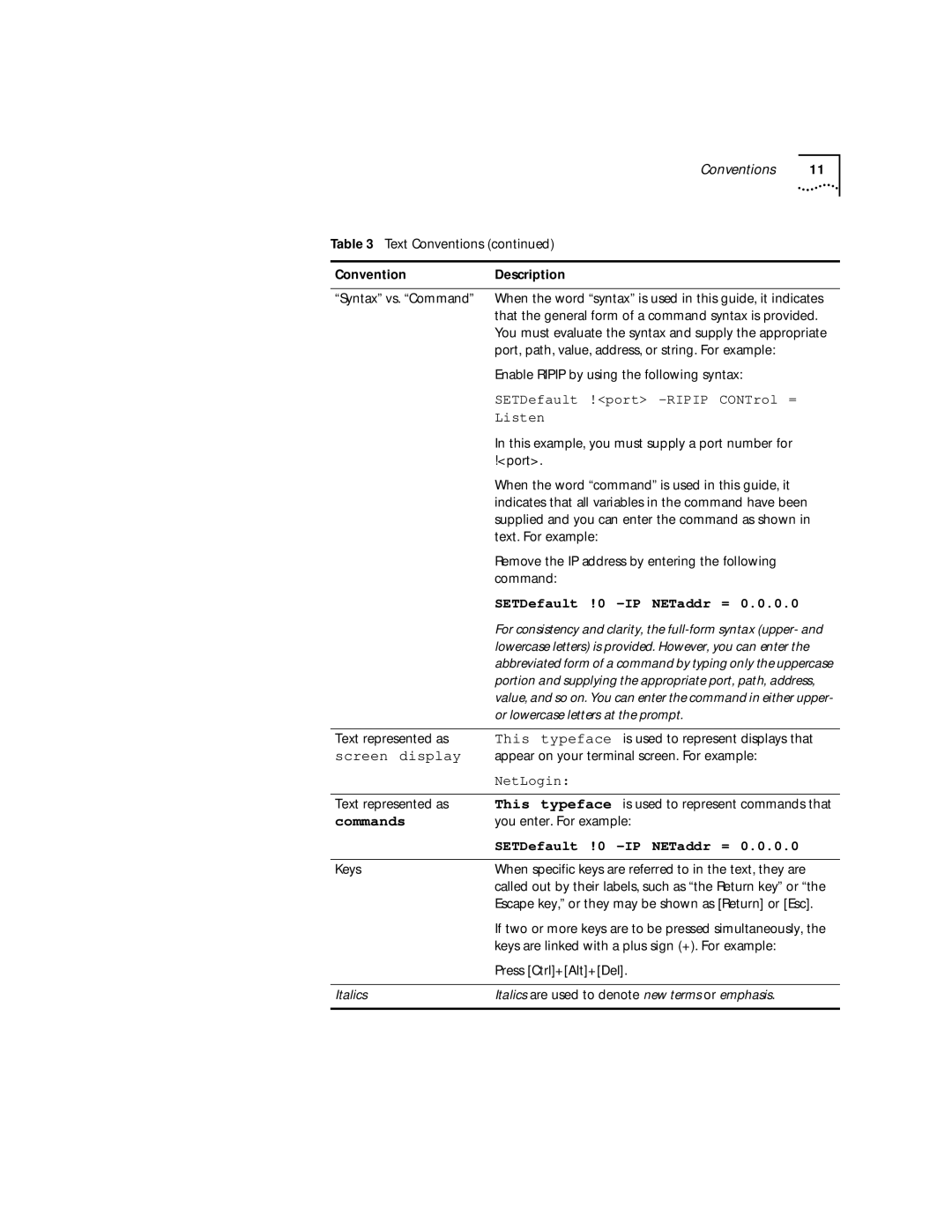
Conventions 11
Table 3 Text Conventions (continued)
Convention | Description |
|
|
“Syntax” vs. “Command” | When the word “syntax” is used in this guide, it indicates |
| that the general form of a command syntax is provided. |
| You must evaluate the syntax and supply the appropriate |
| port, path, value, address, or string. For example: |
| Enable RIPIP by using the following syntax: |
| SETDefault !<port> |
| Listen |
| In this example, you must supply a port number for |
| !<port>. |
| When the word “command” is used in this guide, it |
| indicates that all variables in the command have been |
| supplied and you can enter the command as shown in |
| text. For example: |
| Remove the IP address by entering the following |
| command: |
| SETDefault !0 |
| For consistency and clarity, the |
| lowercase letters) is provided. However, you can enter the |
| abbreviated form of a command by typing only the uppercase |
| portion and supplying the appropriate port, path, address, |
| value, and so on. You can enter the command in either upper- |
| or lowercase letters at the prompt. |
|
|
Text represented as | This typeface is used to represent displays that |
screen display | appear on your terminal screen. For example: |
| NetLogin: |
|
|
Text represented as | This typeface is used to represent commands that |
commands | you enter. For example: |
| SETDefault !0 |
|
|
Keys | When specific keys are referred to in the text, they are |
| called out by their labels, such as “the Return key” or “the |
| Escape key,” or they may be shown as [Return] or [Esc]. |
| If two or more keys are to be pressed simultaneously, the |
| keys are linked with a plus sign (+). For example: |
| Press [Ctrl]+[Alt]+[Del]. |
|
|
Italics | Italics are used to denote new terms or emphasis. |
|
|
